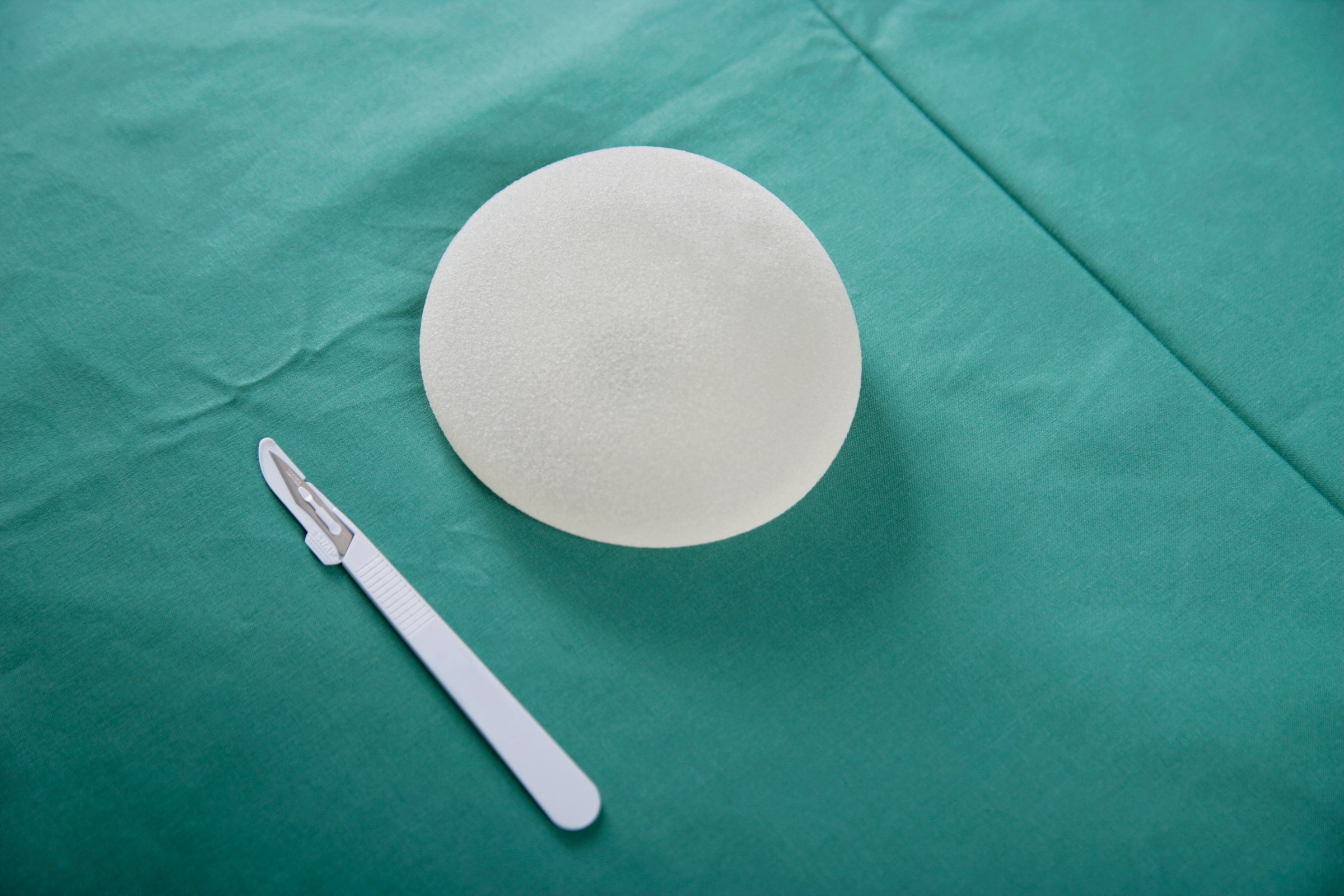
There are risks involved in every surgical procedure, but this is one you may not have expected: The FDA recently reported 359 cases and nine deaths from a rare cancer linked to breast implants.
The cancer is anaplastic large cell lymphoma (ALCL), which impacts the cells around the implant. This non-Hodgkin’s lymphoma is not a form of breast cancer, but can rather be found in the skin or lymph nodes. “It has presented in women who had problems with the implant, like lumps or asymetry,” says Dr. Clara Lee, a reconstructive surgeon at the Ohio State University Comprehensive Cancer Center.
Women have breast implants for two reasons: augmentation or reconstruction after mastectomies. The cancer could develop in either situation, though the risk is low. ALCL is estimated to occur in 1 in 300,000 women with implants.
“The cancer seems to be slow-growing, and most of the women had the tumor removed and treated,” Lee explains. “But there are enough cases now, in addition to deaths, that the FDA issued this warning.”
Aside from ALCL, there are other risks involved with breast implants that any woman considering the procedure should know. Lee highlights the following for her patients before they go under the knife:
Just after surgery
Lee says she tells her patients that they could see issues right away. “Shortly after surgery, most of the risks have to do with the healing process,” she explains. “The incisions could heal slower than usual, or the patient could develop an infection.” In the latter case, antibiotics might be administered. If that doesn’t work, the surgeon may have to remove the implants.
Within the first year
As the implants settle in, there are occasional problems, says Lee. The first is “implant malposition,” where you might notice the implant isn’t sitting right within the breast. This can happen for any number of reasons, as the implant moves or shifts before or after surgery. “The other risk is rippling of the implant,” Lee says, which you might be able to feel or notice beneath the skin.
During the first several years
Lee says that the most concerning risks for patients arise within the first few years after their surgery. The two biggest ones are the implant leaking and capsular contracture.
Implants may develop a hole in the outer layer of silicone from wear and tear. In the case of a leak, some women have the implant removed and replaced, while others may not notice right away and simply live with a small puncture, says Lee. Before gel silicone implants were introduced, the risk of a leak was around 10% in the first decade; now, Lee says that risk has dropped a bit.
Capsular contracture occurs when a layer of scar tissue develops around the implant, causing the capsule of tissue around the breast to shrink, and the breasts to feel too hard or firm. The issue can range from mild to severe, and Lee says some patients may elect to undergo a capsulectomy to take the implant out temporarily, and remove the thickened capsule.
Health.com: What the Perfect Breast Looks Like, According to Men and Women
Five to 10 years later
In terms of long-ranging undesired outcomes, Lee says a patient should still be aware of leaking, capsular contracture and ALCL—all of which can develop in 5 or 10 years after surgery. In the case of the cancer, tell your doctor if you develop any symptoms like hardness, swelling, redness or pain in the breast.
Lee says a common misconception is that you must have implants replaced after the 10-year mark. If there are no issues, there may not be a need; but the FDA estimates 20% of women will need to have their implants removed or replaced within the first 8 to 10 years.
Before and after surgery, talk to your plastic surgeon about all options and risks involved in the procedure, Lee says.
This article originally appeared on Health.com
More Must-Reads From TIME
- The 100 Most Influential People of 2024
- The Revolution of Yulia Navalnaya
- 6 Compliments That Land Every Time
- What's the Deal With the Bitcoin Halving?
- If You're Dating Right Now , You're Brave: Column
- The AI That Could Heal a Divided Internet
- Fallout Is a Brilliant Model for the Future of Video Game Adaptations
- Want Weekly Recs on What to Watch, Read, and More? Sign Up for Worth Your Time
Contact us at letters@time.com